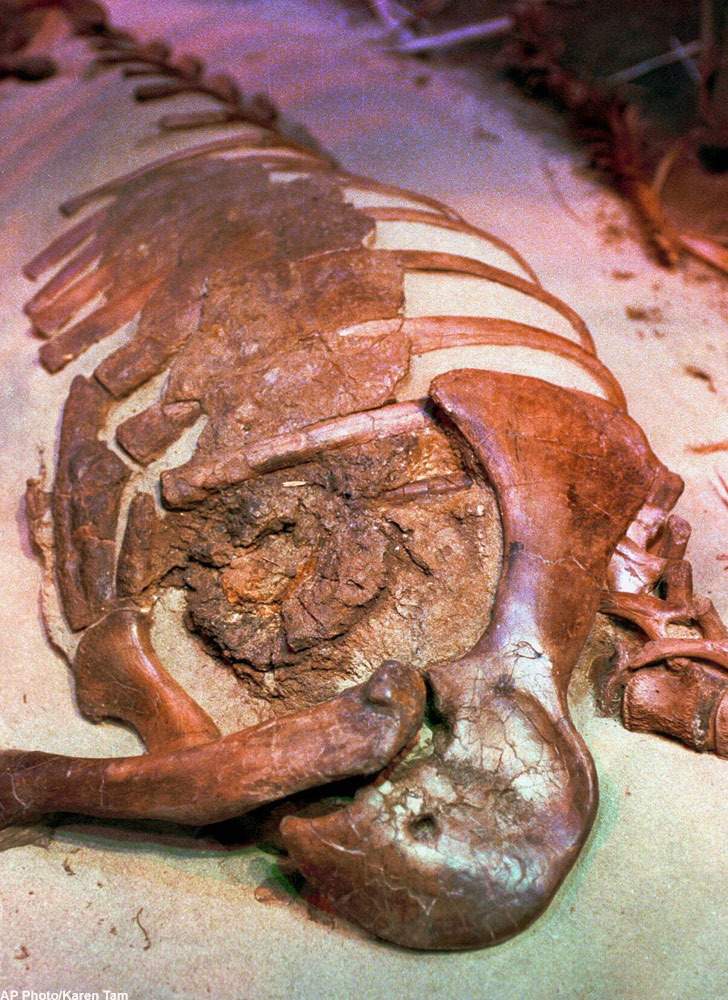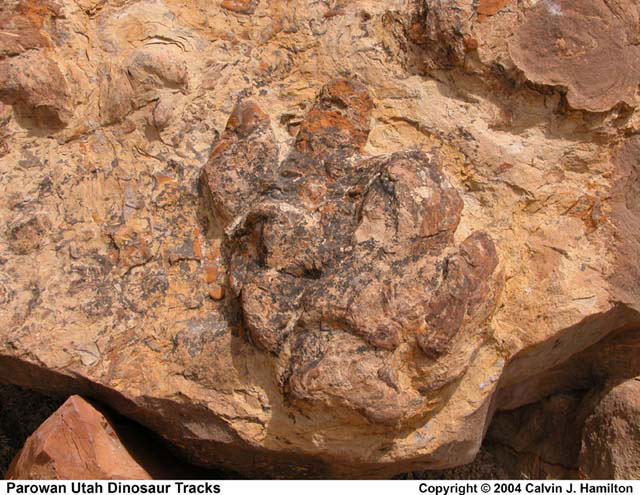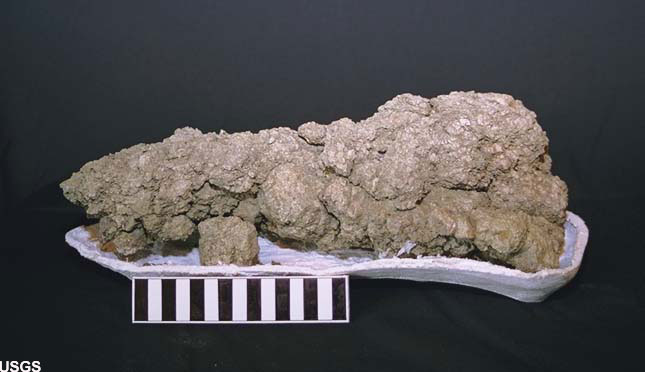Image Gallery: Dinosaur Fossils
Dinosaur Fossil Found in Mammal‘s Stomach

Hu Yaouming, unseen, a graduate student who studies at the American Museum of Natural History points to the fossil of a 130 million year-old mammal called Repenomamus robustus with the remains of a very young Psittacosaurus in its stomach Wednesday, Jan. 12, 2005 at the American Museum of Natural History in New York. Scientists say the animal's last meal probably is the first proof that mammals hunted small dinosaurs some 130 million years ago. It contradicts conventional evolutionary theory that early mammals were timid, chipmunk-sized creatures that scurried in the looming shadow of the giant reptiles. For more information, [read the full story.]
Fossilized Heart

The bones and fossilized heart of a 66-million-year-old dinosaur skeleton is shown, Thursday, April 20, 2000, at the North Carolina Museum of Natural Sciences in Raleigh, N.C. The fossilized heart _ with two ventricles and a single aortic stem, shown in the lower- center of the photo, between an apex of shoulder bones, is the first one ever found in a dinosaur. Researchers said it resembles the heart of a mammal or bird more than that of a reptile and leads to the conclusion that some, if not all, dinosaurs were warm-blooded.
Longisquama insignis

According to some scientists, this 220-million-year-old fossil, from the late Triassic era. offers evidence that dinosaurs were not ancestral to birds. An archosaur called Longisquama insignis, a small reptile roughly the size of a mouse, has ignited scientific controversy due to the six vane-like appendages attached to either side of Longisquama's back. Some researchers believe the appendages were non-avian feathers and that early archosaurs were the ancestors of modern birds. Longisquama is controversial because it's not a dinosaur, and most paleontologists believe that birds evolved from dinosaurs. In 1999, a team of scientists who studied the fossil found arresting parallels between the appendages and feathers, most notably, a hollow shaft with a sheath characteristic of modern feathers. Some scientists believe this shows that the genetic and developmental potential to produce feathers was present in these early archosaurs. The team also reached the conclusion that the feathers weren't used for thermoregulation but likely allowed the creature to glide between trees.
Parowan Dinosaur Tracks

These tracks are much larger than those located at the Johnson Farm in St. George, Utah. In this picture two tracks are overlayed onto each other. This picture was taken on April 17, 2004 at Parowan, Utah.
Copralite - Dinosaur Dung

Shown above is a picture of dinosaur dung. The photo was taken at St. George, Utah on July 16, 2003.
A King-Sized Theropod Coprolite

Fossil feces from a carnivorous dinosaur. Specimen was found in southwestern Saskatchewan, Canada. Scale bar is 15 centimeters (approximately 6 inches) long. The results of research by Karen Chin, Timothy T. Tokaryk, Gregory M. Erickson, and Lewis C. Calk.
Get the world’s most fascinating discoveries delivered straight to your inbox.



